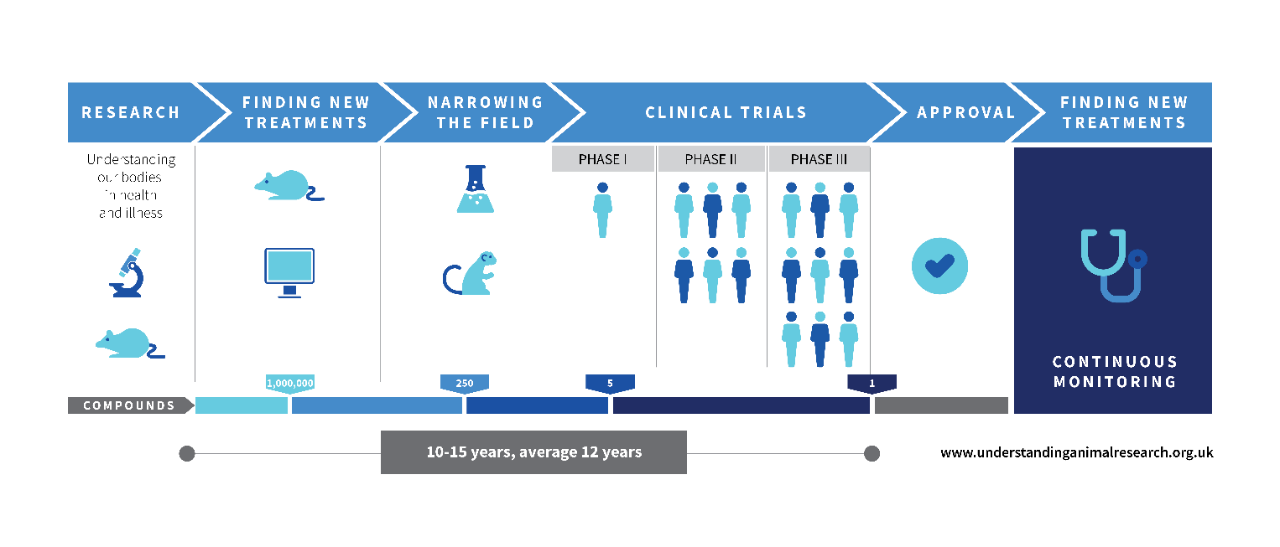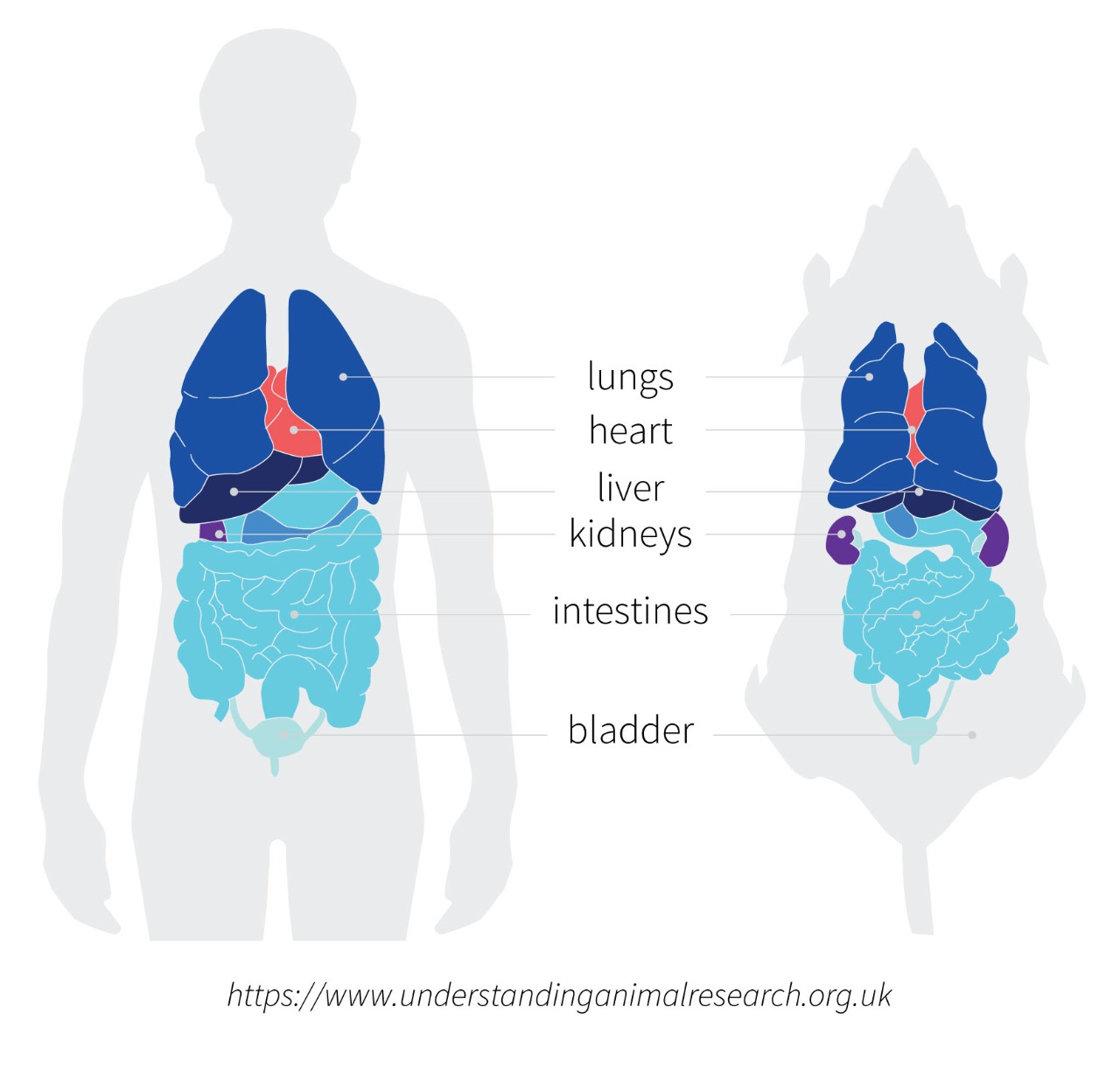Understanding why research models
Ensuring the safety of potential new medicines before they are tested in clinical trials.
Ensuring the safety of potential new medicines before they are tested in clinical trials.
Many lifesaving advances in medicine and safety have been drawn from the scientific discoveries made through animal research. Examples include treatments for AIDS, cancer, diabetes, heart-related ailments, injury-induced trauma and other medical conditions. While there has been significant progress in the last couple of decades, many diseases still haven’t been effectively prevented or cured (for example cancer, diabetes, Spinal Muscular Atrophy, Alzheimer’s or Ebola) and are the subject of intense biomedical research discovery and development worldwide.
Computer-modeling programs, cell cultures and organs-on-chips play a key role in biomedical research. However, in the current state of scientific progress, they cannot completely mimic the complexity of the entire human organism and so cannot yet replace animal testing.
Animal research demonstrates how a new medicine reacts in a whole, living body. This can provide an indication of a drug’s safety and efficacy before it is tested in human volunteers and patients. In fact, governments throughout the world require such studies to help ensure new medicines are safe.
New drugs must be tested in animals before human clinical trials to ensure the safety of patients and volunteers.

Myth:
Animal research is not relevant to people because animals are different from people.
Fact:
Humans are biologically very similar to other mammals and have the same organs – heart, lungs, kidneys, liver and more – that serve similar functions. They also share many genetic similarities. For example, humans and mice share approximately 85% of the same genes according to a Business Insider article published April 6, 2018.
We focus exclusively on animal research that improves the health of patients around the world … and even the health of pets.
Many diseases, from cancer to epilepsy, affect both animals and humans. The discovery of an effective treatment in one population can help further research in others. In fact, nine in 10 medicines developed for humans are the same or very similar to those used by veterinarians1.
Insulin – still a vital part of diabetes treatment (9.4% of the US population (30.3 million people have diabetes) – was discovered in dogs.
That discovery has contributed enormously to human health, but has also extended the lives of many diabetic dogs2.

Scientists have discovered how to breed mice with genetic alterations that mimic human diseases. The result: medicines and other therapies can be evaluated in these mice to help predict their effectiveness in people3.
